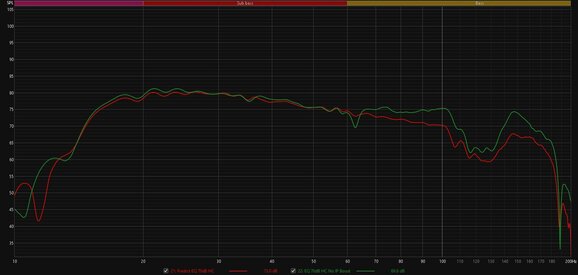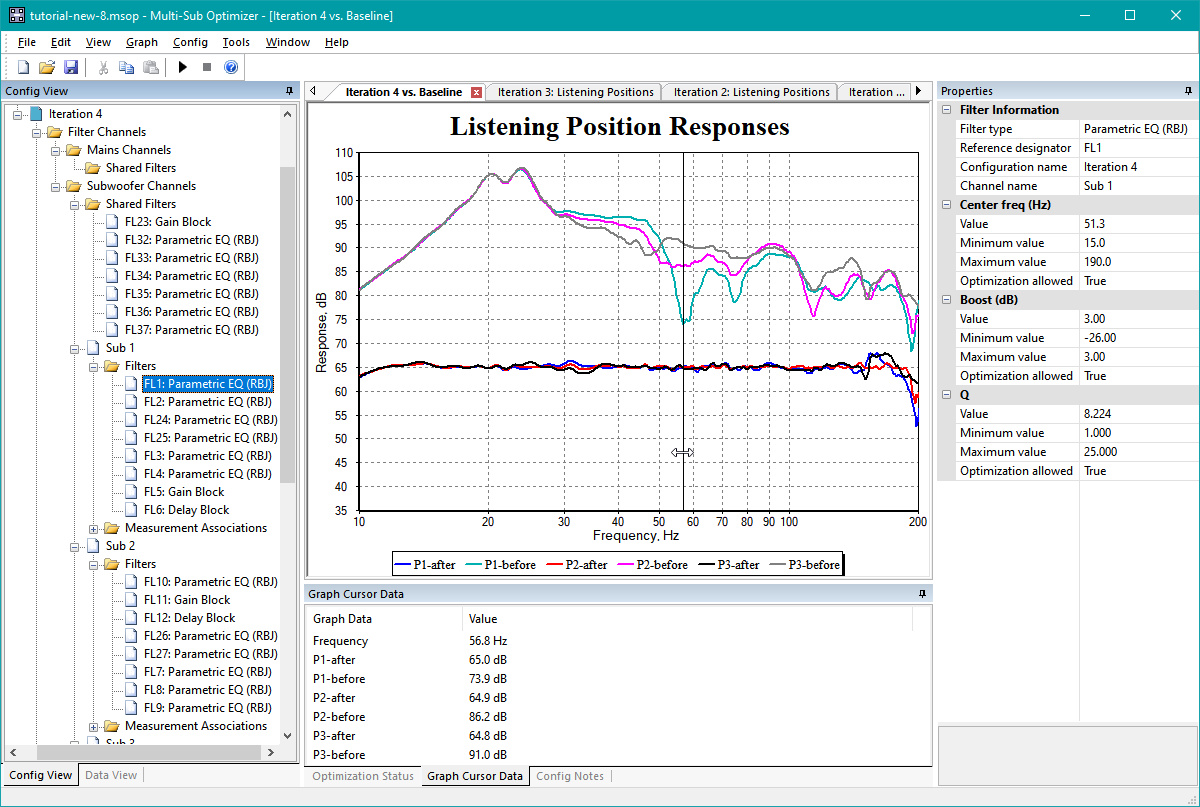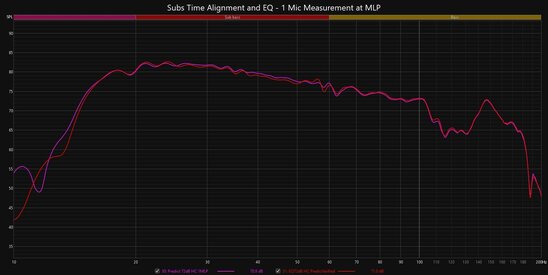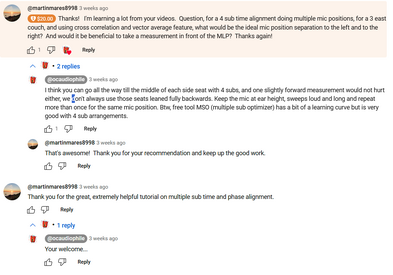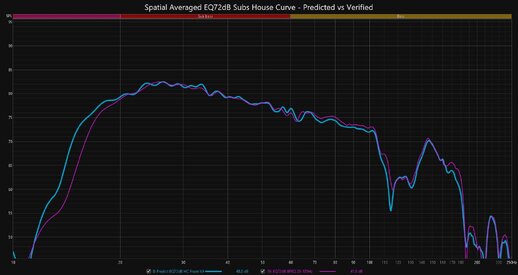Thread Starter
- Joined
- Apr 23, 2024
- Posts
- 17
More
- Preamp, Processor or Receiver
- Denon X3600H
- Main Amp
- OSD Nero XA5180
- Additional Amp
- Emotiva BasX A5
- DAC
- Wiim Ultra
- Universal / Blu-ray / CD Player
- Sony UBP-X800M2
- Streaming Equipment
- Nvidia Shield TV Pro
- Streaming Subscriptions
- Netflix, Prime Video, Disney+, Hulu, ESPN+
- Front Speakers
- RSL CG25
- Center Channel Speaker
- SVS Ultra
- Surround Speakers
- RSL CG5
- Front Height Speakers
- RSL CG3
- Subwoofers
- RSL Speedwoofer 10S
- Video Display Device
- 85Inch Samsung 4K TV
REW newbie here reaching out to advanced REW users. I reached out to OCA for Cross Correlation Time Alignment and Vector Average advice and recommendations to time align and EQ my 4 subs for 3 seats. I did three measurements for each of my seats, followed the steps to Cross Correlate and Vector average the measurements. EQed my subs to my preferred house curve, ran the predict function but when I measured to verify my predict house curve the verified measurement looked totally different that the predict. For my REW measurement, I used 0 to 24000Hz range, used "Used acoustic timing reference for my Timing. Does anyone have any idea as to what why the actual and the predict are different and what I might be doing wrong? The verified measurement has a null at 62.5 Hz and levels off up to the 100Hz. I'm very confused.








